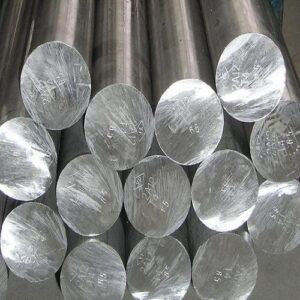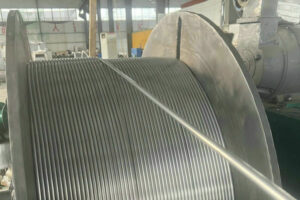When choosing Aluminum alloys, it is important not only to consider the series of the alloy (1000-8000 series) but also to pay attention to its tempering state (i.e. heat treatment or processing state), as this will directly affect the mechanical properties and applicability of the material. The following will detail how to comprehensively consider these factors and choose the aluminum alloy that best suits your needs.
Selection of aluminum alloy series
Aluminum alloys are divided into 1000 to 8000 series according to their main alloying elements and characteristics, and each series has unique properties and applications.
1. 1000 Series Aluminum Alloy
Main element: pure aluminum (content more than 99%)
Characteristics: excellent electrical conductivity, thermal conductivity and corrosion resistance, low strength, and good formability.
Application: electrical conductors, food packaging, chemical equipment, etc.
2. 2000 Series Aluminum Alloy
Main element: copper
Characteristics: high strength, good fatigue resistance, poor corrosion resistance, can be strengthened by heat treatment.
Application: high-strength parts such as aerospace structural parts, bolts, and nuts.
3. 3000 Series Aluminum Alloy
Main element: manganese
Characteristics: good corrosion resistance and formability, medium strength, can not be strengthened by heat treatment.
Application: roof, wall panels, kitchen utensils, storage tanks, etc.
4. 4000 Series Aluminum Alloy
Main element: silicon
Characteristics: low melting point, good heat resistance, usually used for welding materials.
Application: welding wire, welding rod, building materials, etc.
5. 5000 Series Aluminum Alloy
Main element: magnesium
Features: high strength, and excellent corrosion resistance, especially seawater corrosion resistance, cannot be strengthened by heat treatment.
Application: ships, pressure vessels, automobile and aircraft parts, etc.
6. 6000 Series Aluminum Alloy
Main elements: magnesium and silicon
Features: medium strength, good weldability, and corrosion resistance can be strengthened by heat treatment.
Application: building structures, automobile parts, bicycle frames, etc.
7. 7000 Series Aluminum Alloy
Main element: zinc
Features: ultra-high strength, good fatigue resistance, poor corrosion resistance, can be strengthened by heat treatment.
Application: aerospace, high-stress structural parts, high-performance sports equipment, etc.
8. 8000 Series Aluminum Alloy
Main elements: other elements (such as iron, and lithium)
Features: special properties, used in specific fields.
Application: aluminum foil, cable, lithium battery casing, etc.
Influence of Tempering State
The tempering state refers to the physical state of the aluminum alloy after heat treatment or processing, which directly affects the mechanical properties of the material, such as strength, hardness and ductility. Common tempering states are:
1. F (free processing state)
Features: Without special processing or heat treatment, the performance is not controlled.
Application: Materials that need further processing.
2. O (annealing state)
Features: Completely annealed state, the softest, the best ductility, and the lowest strength.
Application: Products that require forming processes such as deep drawing and spinning.
3. H (work hardening state)
Features: Improve strength and hardness through work hardening. Common ones are H12, H14, H18, etc. The number indicates the degree of work hardening.
Application: Cold-processed products that require certain strength and hardness, such as plates and strips.
4. T (heat treatment state)
Features: Obtain specific mechanical properties after heat treatment (such as quenching and aging). Common ones are T4, T5, T6, etc.
Application: Structural parts that require high strength, such as aviation parts and automotive accessories.
Explanation of common tempering states:
T4: Natural aging to a stable state after solution treatment.
T5: Artificial aging after high temperature forming.
T6: Artificial aging to a completely stable state after solution treatment.
How to comprehensively select aluminum alloys and tempering states
After clarifying the influence of alloy series and tempering states on material properties, the following steps are required to select suitable aluminum alloys:
1. Clarify Application Requirements
Mechanical properties: required strength, hardness, ductility, etc.
Environmental conditions: whether there are corrosive media, temperature range, etc.
Processing methods: what kind of processing is required, such as welding, forming, cutting, etc.
2. Select the Appropriate Alloy Series
High strength requirements: give priority to 2000 and 7000 series.
Corrosion resistance requirements: 5000 and 6000 series perform well.
Good formability requirements: 1000 and 3000 series are applicable.
3. Determine the Tempering State
Require high ductility: select O state (annealed state).
Require high strength: select a heat treatment state such as T6.
Require medium strength and hardness: select work hardening states such as H14 and H24.
4. Other Considerations
Cost: high-performance alloys and complex heat treatments will increase costs.
Supply chain: ensure that the selected materials are easily available in the market.
Standard specification: meet the requirements of industry or national standards.
Example Analysis
Example 1: Shipbuilding
Requirement: seawater corrosion resistance, high strength, good weldability.
Selection: 5000 series (such as 5083 aluminum alloy), O state, or H116 state.
Example 2: Aviation structural parts
Requirement: ultra-high strength and lightweight.
Selection: 7000 series (such as 7075 aluminum alloy), T6 state.
Example 3: Automobile body
Requirement: medium strength, good formability, and weldability.
Selection: 6000 series (such as 6061 aluminum alloy), T4 or T6 state.
In Conclusion
Choosing the right aluminum alloy requires a comprehensive consideration of the alloy series and tempering state to meet the performance requirements of a specific application. Understanding the characteristics of each series and the impact of the tempering state on performance will help you find the best balance between strength, corrosion resistance, processing performance and cost.













 Arabic
Arabic Bulgarian
Bulgarian Dutch
Dutch English
English French
French German
German Indonesian
Indonesian Italian
Italian Japanese
Japanese Korean
Korean Portuguese
Portuguese Romanian
Romanian Russian
Russian Slovenian
Slovenian Spanish
Spanish Thai
Thai